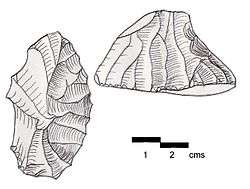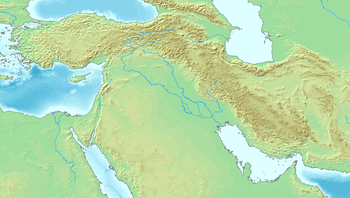Antelian
The Antelian culture, now called Levantine Aurignacian, is an Upper Paleolithic phase of the Levant (Syria, Lebanon, Palestine) that evolved from the Emiran culture. The most important innovation in this period is the incorporation of some typical elements of Aurignacian (see Levantine Aurignacian), like some types of burins and narrow blade points that resemble the European type of Font-Yves.
 | |
| Geographical range | Levant |
|---|---|
| Period | Upper Paleolithic |
| Dates | c. 32,000 – c. 12,000 BP |
| Preceded by | Emiran, Ahmarian, Levantine Aurignacian |
| Followed by | Kebaran |

Antelian
Map showing the approximate location of the Antelian (clickable map)
| The Paleolithic |
|---|
| ↑ Pliocene (before Homo) |
|
|
|
|
Fertile Crescent:
|
| ↓ Mesolithic |
Phases
- Upper Paleolithic III (lower Antelian).
- Upper Paleolithic IV (upper Antelian): proliferation of burin types and decrease in the number of Font-Yves points. First and almost only use of bone for tools in the region, very rare in any case.
- Upper Paleolithic V (Athlitian): specialization of Antelian with a comeback of the Chatelperronian knives of the Emiran.
End of Antelian/Atlitian
The appearance of the Kebarian culture, of microlithic type implies a significant rupture in the cultural continuity of Levantine Upper Paleolithic.
References
- M. H. Alimen and M. J. Steve, Historia Universal siglo XXI. Prehistoria. Siglo XXI Editores, 1970 (reviewed and corrected in 1994) (original German edition, 1966, titled Vorgeschichte). ISBN 84-323-0034-9
This article is issued from Wikipedia. The text is licensed under Creative Commons - Attribution - Sharealike. Additional terms may apply for the media files.